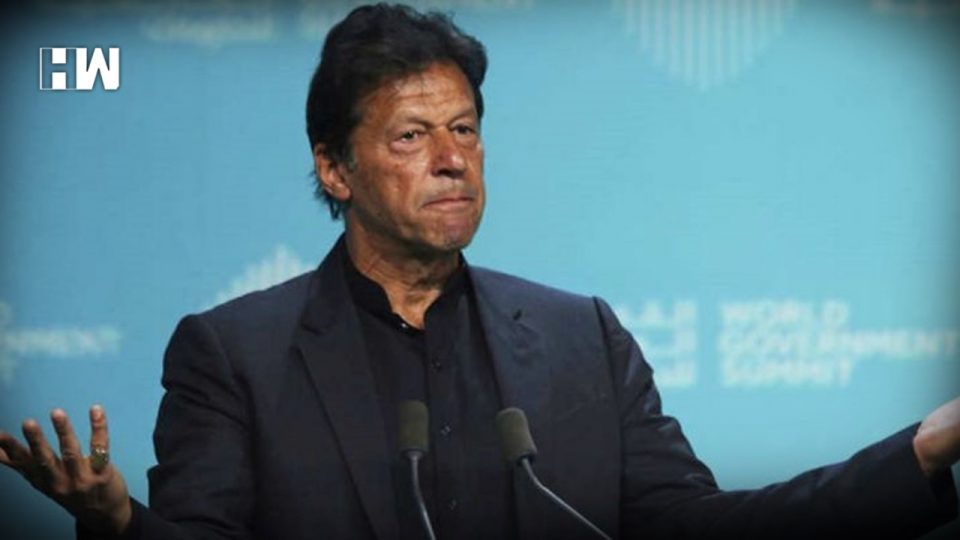Belgrade : Employees working at the Pakistan Embassy of Serbia have not received their salaries since last three months. Raising their voice, Pakistan Embassy Serbia tweeted that amid inflation, government officials won’t work under such circumstances.
The employees of Pakistan Embassy of Serbia are providing their services to the nation but the country has not paid them their salaries from past three months. Their children are forced out of school due to non payment of fees.
Pakistan Embassy Serbia tweeted, “With inflation breaking all previous records, how long do you expect @ImranKhanPTI that we goverment official will remain silent & keep working for you without been paid for past 3 months & our children been forced out of school due to non payment of fees Is this #NayaPakistan ?”
https://twitter.com/PakinSerbia/status/1466647603395928064?s=20
Pakistan is facing a huge inflation. It hits 11.5pc from 9.3pc, highest in 20 months, Pakistan Bureau of Statistics (PBS) data showed on Tuesday.
The massive rupee depreciation fueled import-led inflation. Inflation measured by the Consumer Price Index (CPI) increased to its highest level in 20 months — the period when global oil prices kept rising steadily undermining earlier gains.
At the same time, prices of fresh vegetables, fruits and meat have also posted a persistent increase in major urban and rural centres.
The average inflation during the July-November period rose to 9.32pc on a yearly basis.
Inflation had started declining after surging to 12.4pc in February 2020, mainly driven by a drop in prices of agricultural products. The trend is reversing now on the back of a rise in prices of petroleum products.
In 2020-21, annual CPI inflation was recorded at 8.90pc against 10.74pc the preceding year.
The monthly outlook report of finance ministry shows Pakistan’s inflation rate is driven by demand factors, international commodity prices, exchange rate, seasonal factors and economic agents’ expectations concerning the future developments of these indicators.
Year-on-year (YoY) inflation is marginally increased in the last two months. Going forward, this increase in inflation may be tempered by the seasonal profile whose contribution was positive in October but is usually about neutral in November.
Besides government policy, administrative and relief measures may support to ease out the inflationary pressures.
However, the prices of crude oil along with all other energy inputs are on the rise due to increasing global demand in post-Covid scenarios. Also, a rise in freight charges have made international trade costlier and caused a hike in global inflation. The international price of crude oil rose by 106.7pc on a YoY basis.
Currently, the government aims to increase agriculture productivity for food security and self-sufficiency to counter food inflation by offering Agri-loans.
While the finance division in its recent report claimed that taking into account new price impulses in November and the low base effect, inflation would remain between 8.5 and 9.5 per cent, but the November inflation has already surpassed the projected figure.
Food inflation is still at a higher level as in urban areas it jumped by 11.9pc in November on a yearly basis and 3.9pc on a monthly basis, whereas the respective growth in prices in rural areas was 8.6pc and 3.3pc.
According to a finance division report, food prices have risen globally due to shortage of supply of commodities and high demand. Pakistan has also been affected, as the country is a net importer of food items especially wheat, sugar, pulses, and edible oil.
The report says the government has already announced Rs120 billion package, jointly funded by the federal and provincial governments, to provide a 30pc discount on ghee, flour and pulses to 130 million less privileged people.
The PBS data showed that in urban areas, food items, which saw an increase in their prices in November as compared to the previous month, included tomatoes 131.64pc, mustard oil 11.6pc, vegetable ghee 10.87pc, vegetables 10.47pc, eggs 10.19pc, cooking oil 9.71pc, potatoes 8.85pc, honey 5.61pc, fruits 4.37pc, pulse masoor 3.14pc, meat 2.63pc, milk 2.33pc, fish 1.90pc, gram whole 1.77pc, rice 1.73pc and sugar 1.43pc.
In urban areas, the prices of onions declined by 7.97pc, chicken by 4.34pc, and pulse moong 0.69pc.
Overall, a similar trend in food prices was noted in rural areas.
Non-food inflation in urban centres increased by 12pc on a YoY and 2pc on a month-on-month basis, whereas in rural areas it rose by 13pc and 3pc, respectively. The increase in non-food inflation was mainly driven by a hefty rise in oil prices in November.
Core inflation in urban areas was 7.6pc in November as against 6.7pc the previous month. In rural areas, the corresponding increase was 8.2pc as against 6.7pc.
The State Bank determines the key policy rate — currently at 8.75pc — based on the core inflation rate.
Average inflation measured by the Sensitive Price Index edged up to 18.1pc in November from 15.2pc a month earlier, while the Wholesale Price Index surged to 27pc during the month under review from 21.2pc.
As an independent media platform, we do not take advertisements from governments and corporate houses. It is you, our readers, who have supported us on our journey to do honest and unbiased journalism. Please contribute, so that we can continue to do the same in future.

